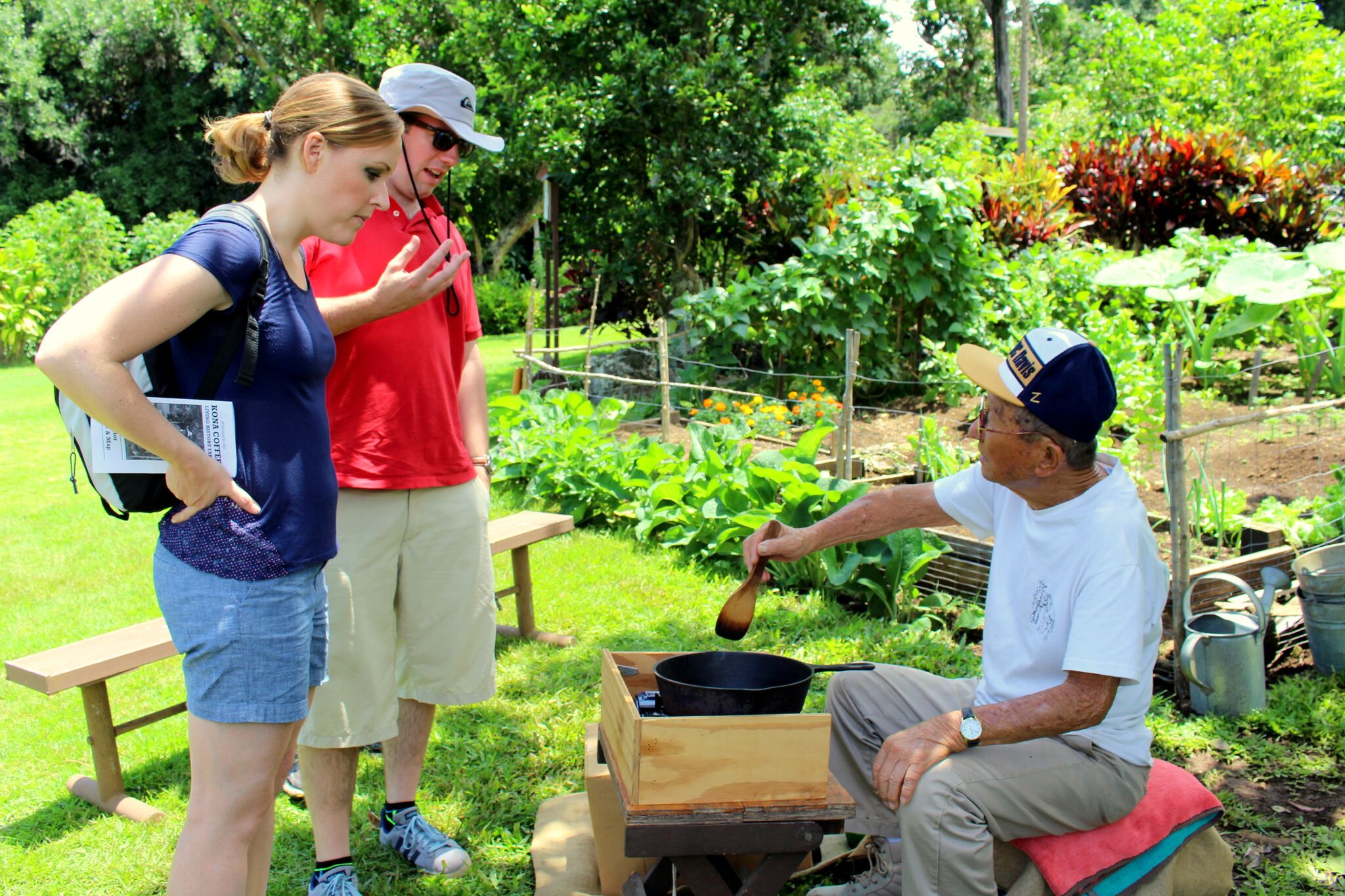Step back in time nearly 800 years, when Waikiki Beach was a rocky shoreline and the surrounding areas were a marshy wetland ideal for growing crops, especially the Hawaiian staple: taro. At the edge of the present day University of Hawaii at Manoa campus, a productive loi (taro field) known as Ka Papa Loi o Kanewai was cultivated.
Currently operated as part of the University’s Hawaiian Studies program, the loi offers locals and visitors alike a unique experience and insight into the Hawaii of centuries ago. Explore tranquil Manoa Stream, complete with small waterfalls and native plants, and learn how Hawaiians constructed complex irrigation systems.
On our recent trip, we heard the legend of Kane and his brother Kanaloa, who created the islands’ major streams, and for whom the loi was named. After a short hike touring the irrigation system, we collected leaves from the ground and the waterways. Once our buckets were filled, we were invited to dump them into the fallow loi to add nutrients to the soil. Then came the fun part- rolling up our pants and jumping in!
Ka Papa Loʻi ʻo Kānewai nurtures a flourishing taro patch that generously offers its resources to the community. Along the stream and gentle slopes, a diverse array of native and indigenous trees and shrubs thrive. We extend a warm invitation to families, students, and community organizations to participate in the practices of hana Hawaiʻi and embrace the beauty of ʻōlelo Hawaiʻi. Kūpuna and keiki are encouraged and welcomed, fostering an atmosphere where they can comfortably share their wisdom regarding kalo and the treasures of Hawaiʻi. Our dedicated staff possesses expertise in identifying, cultivating, and propagating various native plants.
“Pakolu Nā Kahu”…
Through the embrace of a single Hawaiian value discovered at Ka Papa Loʻi ʻo Kānewai, we come to realize that it naturally calls upon a multitude of values. Three fundamental values, or kahu, come to light, shaping the outlook and disposition that those of us at Ka Papa Loʻi ʻo Kānewai must embody to create a truly enriching experience for our visitors and kamaʻaina. Our aspiration is to kindle the enduring practice of these kahu, extending their influence far beyond the time spent within our community.
.




